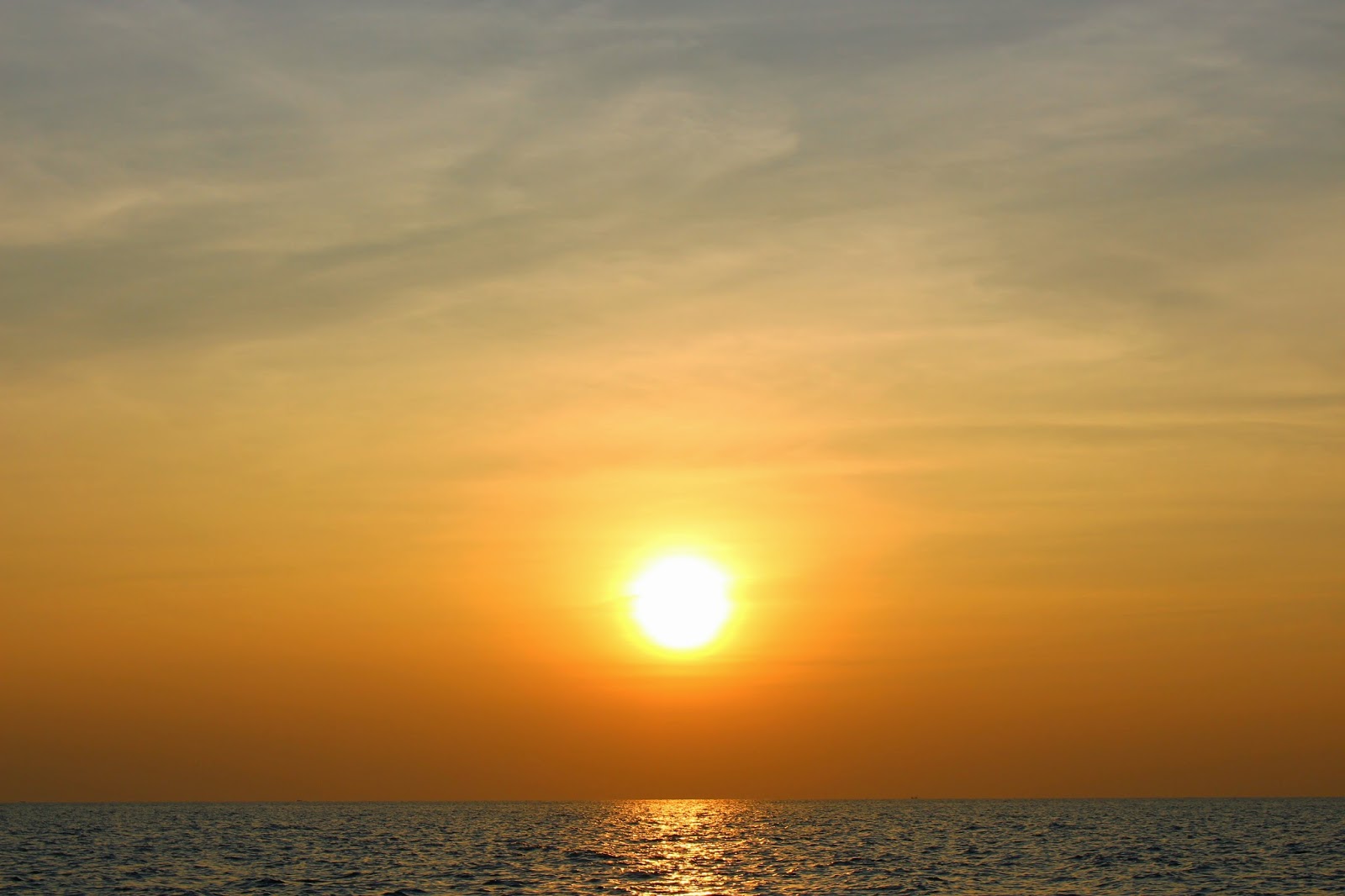We spent the past weekend at the
Ngwe Saung beach. It is situated west of Yangon, in the Bay of Bengal,
Ayeyarwady Region. On the same shore, but up to the north, there is the famous
Ngapali beach. The Ngwe Saung beach is not very developed nor very popular with
tourists also probably due to the4h30 drive (260km) to reach the small
fishermen village situated in the middle of the 12 km long beach.
The last stretch of the road is
taking you up to a hilly and curvy road for almost one hour drive before reaching
the seaside. The scenery is beautifully green but you can notice a lot of
deforestation to plant instead rubber trees on most of the slopes.
It is a place where the tourist
will come to relax and not to party or do many activities. It is such a place
we hoped to find.
We arrived late Friday evening. The
place is ideal if you like to wake up early morning to take an hour long walk on
the beach. The beach is wide, quiet and
almost empty. Sometimes you feel like on an endless deserted beach. It is a wide,
silver-grey sandy beach with very fine sand. We noticed that on the beach, long
time ago, there was a coconut tree plantation.
Many of the beautiful and tall palms are still decorating the hotel
grounds. The seabed is very gradual which is nice as it allows to feel at ease
and to enjoy the warm and clean water.
They say there are strong currents but
at this time of the year we could have a nice swim. There are a lot of crabs,
white and red, who rest at the edge of their sand holes when nobody is around.
On the shore we found some very delicate and beautiful shells. Back on the sun
lounger we watched the few locals passing by, either walking or riding a
motorbike (scooter). Indeed they use motorbikes on the beach as it is very wide
and the outgoing tide makes a stretch of sand quite hard and it is used as a
local motorway. There are not many of them so it is not bothersome and you can
hardly hear them since the beach is so wide and they are quite far away from
the sunbeds. Sometimes, vendors sell you coconuts or fingerfood (small grilled
fish or gambas). They are not pushy and will only approach you if you signal to
them. One coconut costs 1000 Kyats (1USD). Drink the water and wait for another
coconut seller and ask them to cut it open for you so that you can enjoy the
coconut meat.
You can walk on the beach to the
village or to the Lover’s Island in the southern end of the beach. At low tide
you can walk from the beach to this island which can make a nice stroll from
your hotel.
We stayed at Eskala hotels and
resorts, a 46 days old resort, as the manager informed us upon arrival. We
booked on agoda.com, had a reduction and got a good price for two nights: 195
USD all taxes included, with breakfast. We were really happy with our stay. The
best things were the nice staff and the beautiful swimming pool. As for lunch
and dinner we enjoyed some good fish and different salads in a number of
restaurants which we can all recommend: Golden Myanmar, Jasmine, Family or the
Silver Blue Sea (family-run) restaurant.
The village is small and many
hotels, restaurants and souvenir shops line the main street. The tourists may
rent a bike, motorbike or book an excursion for snorkeling and/or fishing. The
price for a boat trip, for one full day (the same price goes for half a day),
is 80.000 Kyats. We booked a fishing boat for half a day. The boys had fun
fishing while all of us enjoyed the beautiful sunset. Two locals who joined the
boat were fishing probably their evening dinner with some rudimentary and
original fishing gear made out of bottles on which the fishing line was
attached.
The road from Yangon to the beach
is not in a good repair and is quite dangerous and narrow. There are animals,
bicycles, pedestrians, motorbikes, cars, tractors, and buses on the streets. In
fact, village life unfolds on this road as it passes through countless
villages. The road takes you through the upper delta region of the country and
at this time of the year they harvest the rice. It is done manually and the
rice is dried at the road side. Once the sun sets and darkness sets in, driving
becomes tiring and risky as many vehicles and pedestrians have no lights or the
cars buses and trucks use their long beam headlights even if you approach them,
blinding you in the process. Blinded you have to pay attention to your side of
the road which is often a challenge as there could be a motorbike (without
lights) and pedestrian or an animal...


















No comments:
Post a Comment